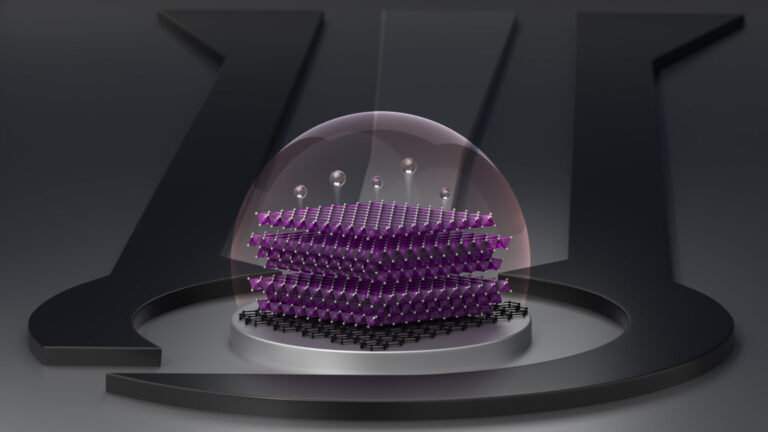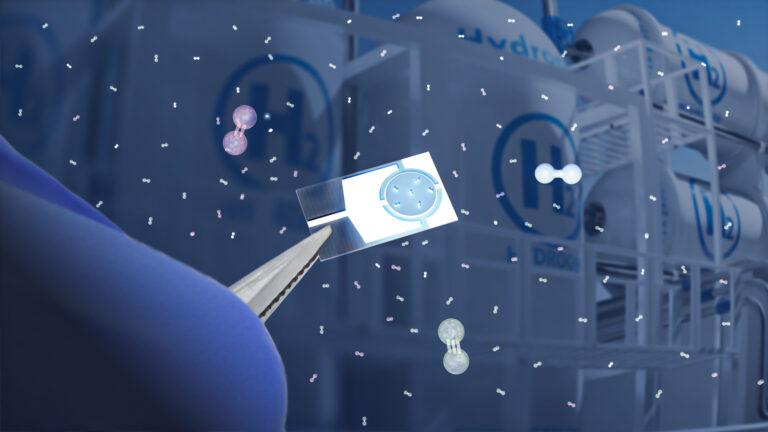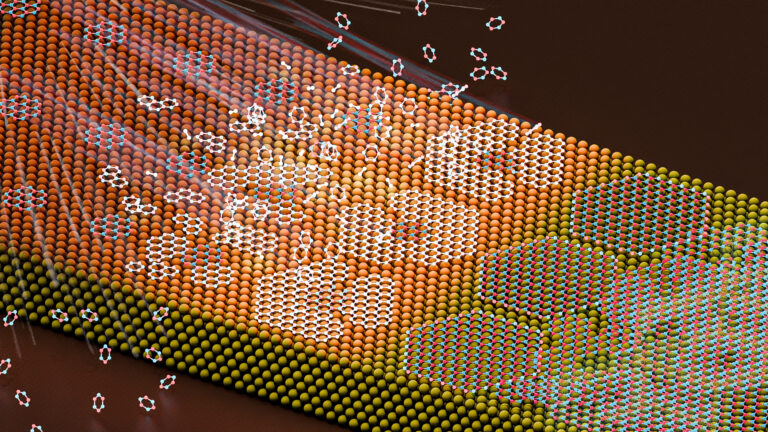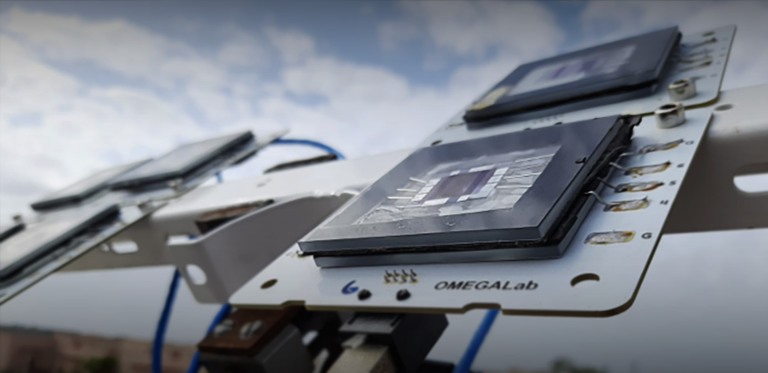Material Science and Engineering
Warming to a new direction for perovskites
Controlling the orientation of hybrid perovskite crystals offers large-scale structural purity and new properties.

Growing crystals of materials called hybrid perovskites on a surface with a temperature gradient can control the orientation of the crystallization—a finding that could open up a path to many new applications in electronics or optics.
Hybrid perovskites have a similar crystal geometry to natural perovskite minerals, but other chemical groups sit in place of the calcium, titanium and oxygen atoms of the natural minerals.
Leader of the research group, Osman Bakr, of KAUST’s Material Science and Engineering and member of the University’s Solar Center, explained that the methylammonium lead iodide perovskites currently in use have interesting optical and electrical properties. “These perovskites are being intensively studied for a broad range of optoelectronic applications, such as solar cells, photodetectors, light-emitting diodes and laser applications.”
Exploring the full potential of these materials has previously been limited by difficulties in obtaining large single crystals, especially those with controlled and coherent alignment of crystal growth in a specific direction.
“We have now shown that introducing a thermal gradient on the growth substrate controls the solidification direction and is a powerful strategy for controlling crystal orientations,” said Bakr (see image). He went on to explain that the resulting optically pure crystalline films could be useful for making highly efficient phototransistors, where the flow of current can be controlled by light.
One remarkable property detected by the researchers is a large difference in electrical behavior depending on the orientation of the films in an applied electric field. This is a direct benefit of being able to control the orientation of the parts of the crystals as they grow.
“Our ability to fabricate these highly ordered and orientationally pure crystalline properties over a large area has attracted the interest of solar-cell manufacturers,” said Bakr.
The specific hybrid perovskites used while exploring the effect of heat gradients on crystal growth have almost ideal properties for absorbing light and converting it into electricity. These include the highly efficient creation of electric current in response to sunlight and a long lifetime of the charge carriers, which allows the charge to diffuse over unusually long distances in response to each stimulus from the light.
Bakr says that the next key challenge is to make films that are at least a few-hundred-nanometers thick because both thickness and surface area are important for solar-cell applications.
Solar cells are just one of many potential applications for these crystals. The KAUST team expects to develop crystals in the future that will interest potential commercial partners.
References
- Cho, N., Li, F.,Turedi, B., Sinatra, L., Sarmah, S. P.… & Bakr, O.M. Pure crystal orientation and anisotropic charge transport in large-area hybrid perovskite films. Nature Communications 7, 13407 (2016).| article
You might also like

Material Science and Engineering
Electron movie guides design of layered perovskite materials

Material Science and Engineering
Remote region sensor for essential vitamin deficiency

Material Science and Engineering
Low-power hydrogen sensor detects leaks in an instant

Material Science and Engineering
Illuminating pathways to long-lived organic solar cells

Chemistry
Beating the dark current for safer X-ray imaging

Chemical Engineering
Net benefits for advanced materials design

Material Science and Engineering
Atom-thin insulator grown into perfect films

Material Science and Engineering



